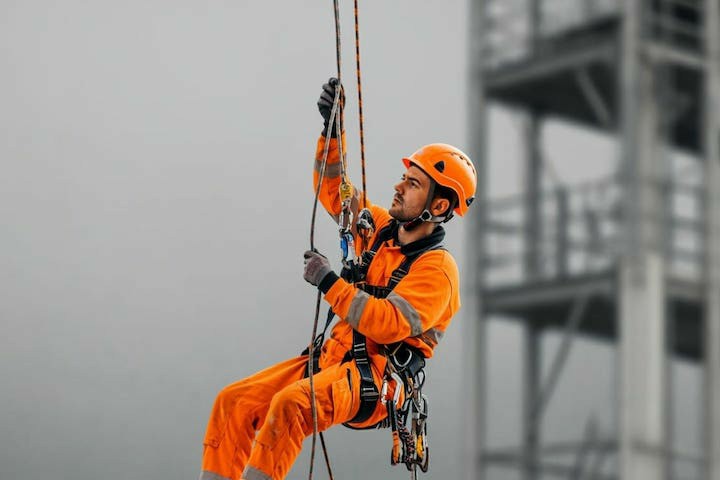


 349,500 Offered Certificates
349,500 Offered Certificates
 24/7 Online Training
24/7 Online Training
 Money Back Guarantee
Money Back Guarantee
 Fully Accredited Courses
Fully Accredited Courses

Created at: 22-02-2025 15:44
In today's fast-paced work environment, ensuring the safety of employees, especially those working at heights, is of paramount importance. With the advent of technology, companies have begun to embrace innovative solutions to training, one of the most significant of which is virtual reality (VR). VR is poised to revolutionize Working at Heights training, enhancing safety protocols and reshaping how employees learn and retain crucial information.
Traditionally, Working at Heights training has involved a combination of classroom instruction and hands-on practical sessions. While effective, these methods often fall short in replicating the real-world risks associated with working at elevated levels.
Virtual reality provides a safe and controlled environment where trainees can experience realistic simulations of high-risk scenarios. Here’s how VR enhances training:
Research indicates that experiential learning leads to better retention rates. VR immerses trainees in lifelike environments where they can actively engage with the material, making it easier to absorb critical safety information.
VR allows workers to practice various scenarios—including emergency situations—without the risks associated with actual heights. This hands-on experience is invaluable in preparing them for real-world challenges.
VR training programs often come equipped with tracking capabilities that provide instant feedback on performance. Trainees can immediately understand what they did wrong and how to improve, facilitating quicker learning cycles.
Implementing VR technology in Working at Heights training may seem daunting at first, but the long-term cost benefits outweigh initial investments:
Several organizations across various sectors have successfully integrated VR into their Working at Heights training programs:
Construction Company A adopted a VR safety training module that allowed workers to experience scenarios such as falling and using safety gear without the physical dangers. Feedback suggested a 40% improvement in retention rates.
Facility Management Firm B noted a substantial reduction in training costs upon switching to VR training. The company was able to decrease training duration by more than 50%, which immediately impacted productivity positively.
Businesses considering the adoption of VR technology should focus on the following steps:
As virtual reality continues to evolve, its applications in safety training programs will undoubtedly expand. Companies that embrace this technology will not only boost training efficacy but also demonstrate their commitment to employee safety. By investing in VR solutions, organizations can foster a safer work environment.
Virtual reality is redefining how we approach Working at Heights training. The technology bridges the gap between theory and practice, offering immersive experiences that enhance learning retention and safety awareness. It is time for businesses in Dublin, Cork, and Galway to explore the possibilities of VR as a strategic component of their workplace safety programs.
Ready to revolutionize your safety training? Explore our Working at Heights Course and integrate VR into your training curriculum today! For more information, you can contact us at [email protected].